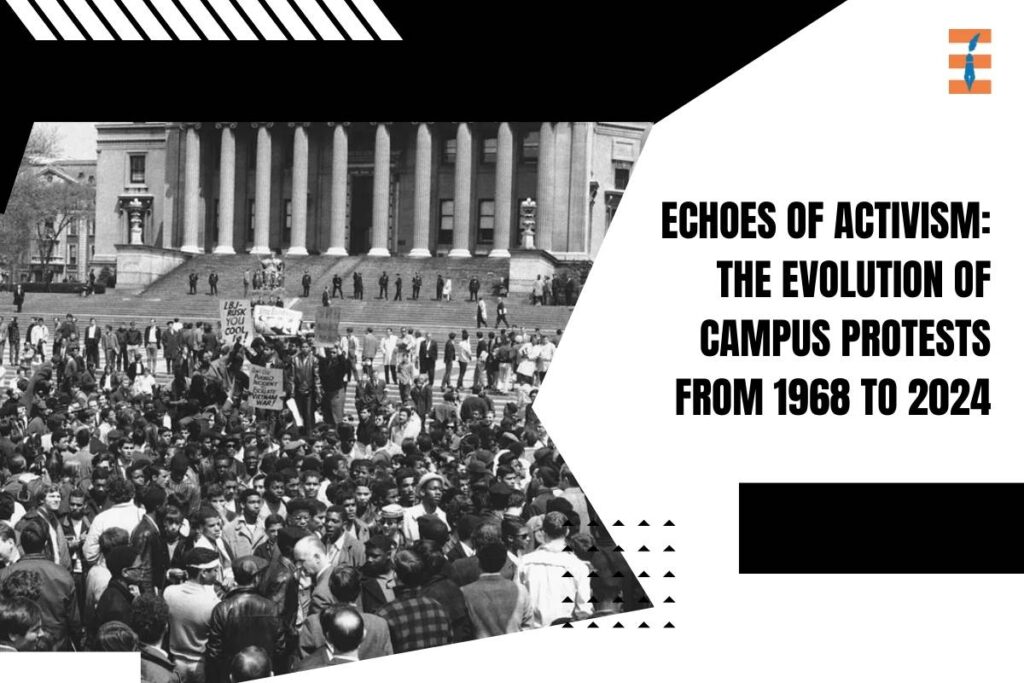Source-AP-Photo_John-Duricka-File
Fifty-six years ago, the winds of change swept through Columbia University as students took a stand against military research funding and social injustices. Fast forward to today, and the echoes of that era reverberate in the ongoing struggles of modern campus activism. The parallels between the past and present offer insights into the evolution of student protests and the challenges faced by universities in navigating these turbulent waters.
The Columbia University occupation of 1968 stands as a testament to the power of student activism in demanding institutional change. Fueled by anti-war sentiments and a desire for social justice, students made impassioned pleas that resonated far beyond the campus walls. The clashes with authorities underscored the tension between dissent and authority, a tension that continues to define campus activism.
The recent protests at Columbia University highlight a recurring theme in higher education: the clash between institutional authority and student demands. Today’s activists, much like their predecessors, seek to challenge entrenched power structures and advocate for causes they believe in passionately. From environmental activism to social justice movements, campuses have become battlegrounds for ideas and ideologies.
One key aspect that bridges the past and present is the role of universities as both centers of learning and arenas of social change. The liberal ideals of free speech and open inquiry, championed in the postwar era, now face challenges from within as differing ideologies vie for dominance. The struggle for ideological supremacy has led to debates on censorship, cancel culture, and the limits of academic freedom.
Campus Activism in the Era of Identity Politics and Free Speech Debates
The rise of identity politics and intersectional activism has reshaped the landscape of campus protests. Issues of race, gender, sexuality, and privilege intersect in complex ways, shaping the narratives and tactics of modern-day activists. The demand for inclusivity and representation has pushed universities to confront their own histories of discrimination and exclusion.
However, amidst the calls for change, controversies arise over the methods and boundaries of protest. The tension between free speech and campus civility has led to heated debates, with critics arguing that some forms of activism stifle open dialogue and intellectual diversity. The fine line between legitimate dissent and disruptive behavior continues to challenge university administrators and faculty.
The current state of campus activism reflects broader societal shifts and ideological divides. Political polarization, social media dynamics, and global events influence the tone and direction of student protests. The recent geopolitical tensions and debates over international conflicts have spilled over into campus discourse, adding layers of complexity to already contentious issues.
Balancing Academic Integrity with Inclusive Activism
As universities grapple with these challenges, questions arise about the role of education in shaping informed and engaged citizens. The legacy of past protests serves as a reminder of the power of collective action and the enduring quest for justice and equality. The path forward requires a delicate balance between upholding academic values and fostering inclusive spaces for diverse voices to be heard.
In the end, the story of campus activism is not just about protests and demands but about the evolving ideals and aspirations of a new generation seeking to leave its mark on history. Whether in the halls of academia or on the streets of protest, the spirit of change and progress endures, shaping the future of higher education and society at large.
Also Read: Navigating Excellence: Unveiling the Mystique of Ivy League Schools










